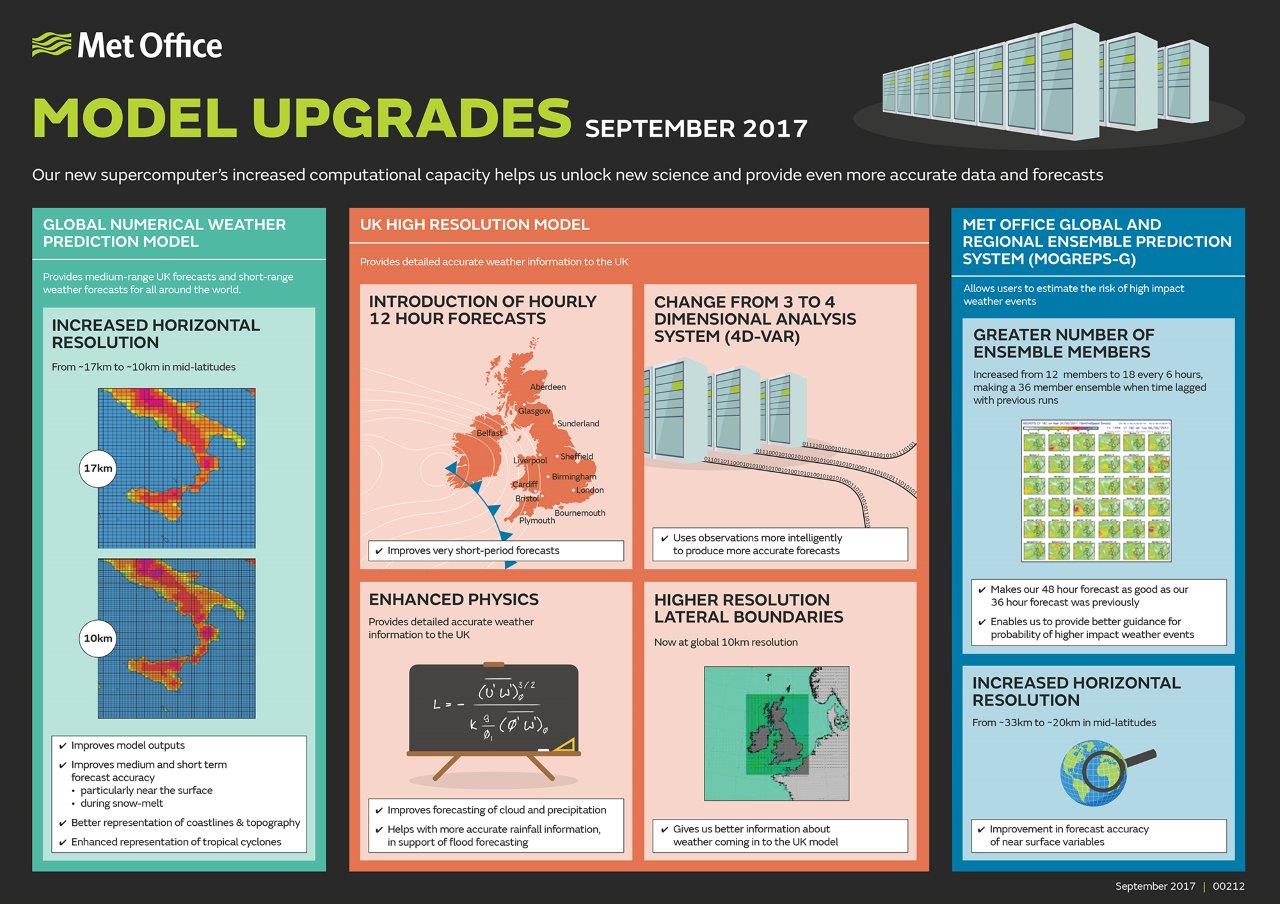100 years of scientific forecasting
Author: Press Office
14:09 (UTC+1) on Fri 22 Sep 2017
The forecast system used today results directly from experiments carried out in the trenches of WW1.
Met Office mathematician Lewis Fry Richardson recognised that pre-First World War weather forecasting practices were fundamentally unscientific, merely matching current weather phenomena with historic records. While volunteering for the Friends Ambulance Unit at Passchendaele he conducted a series of weather experiments.
Richardson broke new ground with a gridded approach to forecasting, and while it took him more than six weeks to calculate a six-hour forecast for a single location, this mathematical approach to weather forecasting has become the basis on which today’s forecasting system has been built. What took six weeks to produce 100 years ago can now be accessed in seconds via an app on our mobile phone.
Research, technological developments and advances in computer power have allowed forecast grid sizes to be cut (i.e. over the last 30 years our Global Model grid sizes have reduced from 90km down to 10km) and improvements in our forecast accuracy. Our four day forecast is now as accurate as our one day forecast was 30 years ago.
Met Office Deputy Director of Weather Science Dale Barker said “Recent significant improvements to our modelling and forecast system include increased resolution of our global models and a greater number of ensemble members to support forecasting for high impact events. We have also enhanced the physics in our UK models and added new hourly updates to the UK forecast from the first 12 hours.

“We have the world’s largest supercomputer dedicated to weather and climate science here at the Met Office. This allows us to continually pull through cutting edge mathematical and scientific developments into our forecast models meaning we are able to produce more detailed and accurate forecasts, helping maintain our world-leading position in weather and climate prediction”.
Our global NWP model, the foundation of our accurate weather provision, is recognised as a world leading National Met Service model verified using standards defined by the World Meteorological Organisation. The high level of trust in our forecast accuracy is underlined by the fact that our model is used under licence by six other forecast centres and over 50 research centres around the world.
Over the last 100 years, developments in our science and technology have led to many step changes in forecasting. The continual improvement in accuracy of our weather forecasts has ensured they have become a trusted tool, embedded in decision-making for government, industry and the public.
As we remember the work of Lewis Fry Richardson we also pay tribute to the thousands of British troops who fought, were injured or who died at Passchendale, particularly the Battle of Menin Road (20 to 25 September 1917) whose anniversary falls this week.


